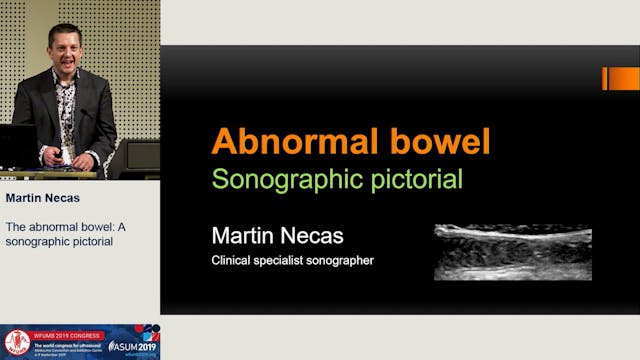Biliary interventions
ABDOMINAL
•
18m
As guidance methods for biliary interventions are used US, X-ray, EUS and ERCP. The Bbenefit for US is: availability, repeatability, daily visit of drainage, fast, permanent view, examination before / during / after the procedure, low cost, combination with X-ray, Interventionist is the curing doctor, no delegation, no loss of information. - Handicaps are: air, bones, low experience, suboptimal possibility of demonstration. ñ A precondition for intervention is visibility!
Methods of Drainage of biliary system are: 1. drainage of biliary duct system (extern; extern-intern (for dilatation, cholangioscopy, stone therapy); intern; rendezvous-method (PTCD+ERCP); 2. drainage of gallbladder; 3. drainage of biliary leakage/bilioma/biliary abscess.
Indications for biliary drainage are: stenosis by tumour, stenosis by stone, stenosis postoperative.
Biliary drainages are made temporary, pre-OP, long-time, palliative.
Special problems & complications are: leakage, bleeding, cholangitis, catheter obstruction, bile acid loss. The use of CEUS to control drainage is an alternative option to control. - Cholecystostomy is an indication in acalculous cholecystitis and in palliative situation. ñ The INVUS guidelines gave recommendation for the biliary interventions.
Up Next in ABDOMINAL
-
The abnormal bowel: A sonographic pic...
Bowel ultrasound is a powerful clinical problem-solving tool. In patients with lower abdominal pain, bowel ultrasound can help determine whether the cause of pain is urological, gynaecological or intestinal in origin. The presence of bowel wall thickening, surrounding inflammatory changes (creepi...
-
AAA Screening
The value of Aortic Anuerysm Screening with abdominal ultrasound is well established. There are however important questions that remain for screening programmes to remain cost effective, accessible, affordable and equitable. Developing strategies to make this possible will be presented and the im...
-
Let's get education on EVAR surveillance
This presentation aims to provide an overview of abdominal aortic aneurysms, Endovascular Aortic Repair (EVAR) numbers and configurations, devices, endoleak and ultrasound assessment including cases.



